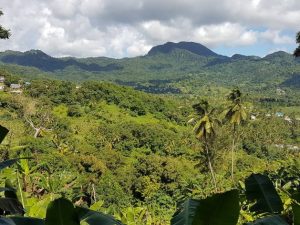22 May 2020 – Amidst alarming rates of deforestation and land degradation, urgent action is needed to safeguard the biodiversity of the world’s forests, according to a new United Nations report, released on Friday. Published on the International Day for Biological Diversity, The State of the World’s Forests 2020, highlights that since 1990, some 420 million hectares of trees have been lost to agriculture and other land uses.
And the COVID-19 crisis has thrown into sharp focus the link between people’s health and that of the ecosystem, underscoring the importance of conserving and sustainably using nature.
“Deforestation and forest degradation continue to take place at alarming rates, which contributes significantly to the ongoing loss of biodiversity”, Food and Agriculture Organization (FAO) Director-General, QU Dongyu, and Executive Director of the UN Environment Programme (UNEP), Inger Andersen, said in the foreword.

Working with nature
Protecting the world’s biodiversity is entirely dependent on the way in which we interact with the world’s forests. And as they harbour most of our terrestrial biodiversity, safeguarding woodland holds the key.
The report shows that forests contain 60,000 different tree species, 80 per cent of amphibian species, 75 per cent of bird species, and 68 per cent of the earth’s mammal species.
Conservation and sustainable use can work together to protect plants, animals and livelihoods.
Within the report, a special study from the Joint Research Centre of the European Commission and the US Forest Service found 34.8 million patches of forests in the world, ranging in size from one to 680 million hectares – illustrating that greater restoration efforts are urgently needed to reconnect forests that have fragmented over time.
Turning the tide
As FAO and UNEP prepare to lead the UN Decade on Ecosystem Restoration in 2021, both UN agency heads expressed their commitment to increased global cooperation in the race to restore degraded and damaged ecosystems, combat climate change and safeguard biodiversity.
“To turn the tide on deforestation and the loss of biodiversity, we need transformational change in the way in which we produce and consume food”, said Mr. QU and Ms. Andersen. “We also need to conserve and manage forests and trees within an integrated landscape approach, and we need to repair the damage done through forest restoration efforts.”
The report notes that the target to conserve at least 17 per cent of the earth’s terrestrial areas by 2020 has been achieved for forests, but acknowledges that progress is still required to ensure that protection.
One study conducted for this report shows that the largest increase in protected forest areas was in broadleaved evergreen forests, typically found in the tropics. Furthermore, over 30 per cent of all tropical rainforests, subtropical dry forests and temperate oceanic forests are now located within protected areas.
Jobs and livelihoods
Forests provide more than 86 million green jobs to the millions of people around the world who count on them for food security and their livelihoods.
Of those living in extreme poverty, over 90 per cent are dependent on forests for wild food, firewood or part of their livelihoods, including eight million extremely poor, forest-dependent people in Latin America alone.
The report was produced by FAO in partnership, for the first time, with UNEP, and technical input from the UNEP World Conservation Monitoring Centre. – UN News




